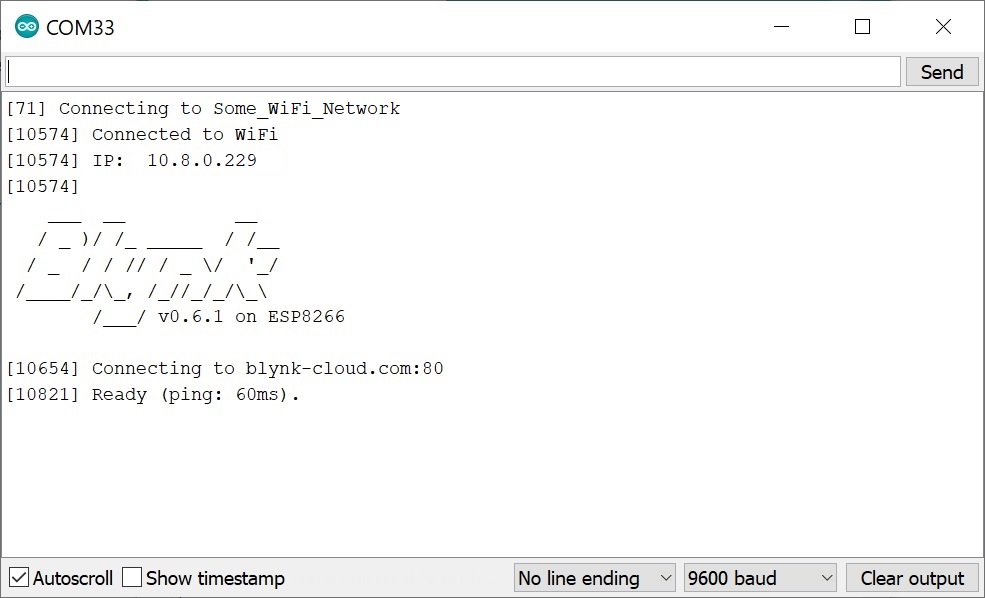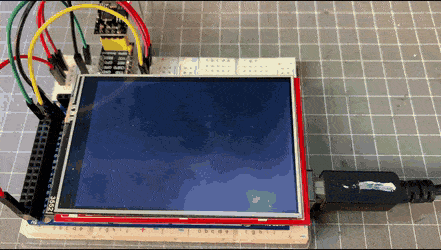Define Blynk_print Serial
It use to print some garbage line while setting up the Wi-Fi connection I dont know why and then it will print my logs. And one day this issue happened agian but even after resetting I was not able to access softAP to reconfigure credentials.
Thus monitoring and keeping track records of your electricity consumption is a tedious task.

. The Variable Resistor and LDR values will be displayed on the Gauges using the Blynk. Value Display widget attached to V5 Value Display widget attached to V6 Comment this out to disable prints and save space define BLYNK_PRINT Serial include include include You should get Auth Token in the Blynk App. Usually it prints my logs good.
And the GPIO pins SD3 D3 D7 RX connected with switch or push buttons to control the 4 relays manually. In case you are using a different Arduino board make sure you use the correct serial pins. The HX711 load cell amplifier is used to get measurable data out.
ใสโทเคนทไดจากแอพ Blynk char ssid xxxxxxxxxxxx. I am also getting the same. Using the Sofware serial library we can define multiple serial ports without any problem.
Auth Token sent by Blynk at AUTH TOKEN Then Goto Tools and select the board as NodeMCU 10 ESP-12E and the proper PORT in Arduino IDE. You can see blow the garbage line it. Then click on the upload button to program the NodeMCU board.
Define Template ID and Device Name on top of your firmware before any includes. The circuit is very simple I have used the GPIO pins D1 D2 D5 D6 to control the 4 relays. Open serial monitor of Arduino IDE where you see the ESP is connected and ready.
In this IoT Project we are interfacing 40Kg load cell to the NodeMCU ESP8266 using the HX711 Load cell amplifier moduleHX711 is a precision 24-bit analog to digital converter ADC designed for weighing scales and industrial control applications to interface directly with a bridge sensor. Define BLYNK_PRINT Serial include include char auth xxxxxxxxxxxxxxxxxxxxxxxxxxx. I have explained the circuit in the tutorial video.
Nodemcu with Arduino In this tutorial you will learn how to do Serial communication between Arduino and Nodemcu esp8266 wifi moduleFor the demonstration purpose in this project LDR and variable resistor will be monitored using the Blynk Application. An ultimate tutorial for beginners on how to connect and use an ESP8266 via Arduino and program it to blink an LED using the Blynk app. So I opened serial monitor.
Enter the following WiFi credential and Authentication token in the code. ใสชอไวไฟ char pass xxxxxxxxxxxx. Upload this sketch into your test board.
Provision your board via Dynamic Provisioning flow and add it to your account using Blynk app. WiFi Name at WiFi Name. To automate this we can use.
We are using GPIO25 in our case. The servo motors Arduino board and ESP8266 NodeMCU should all be. This is the complete circuit diagram for this home automation project.
Download and Install Blynk libraries to your Arduino Board its very important before programming Search on Youtube you can find easily define BLYNK_PRINT Serial include include. The reason for defining another serial port on pin number 2 and pin number 3 is that we want to use the Arduinos default serial port only for the debugging purposes. So in this project the Arduinos default serial port will be used for sending the information to the computer serial.
Do 1 thingy Define server address blynkcloud. In this project we will learn how to make our own IoT Based Electricity Energy Meter using ESP32 monitor data on the Blynk ApplicationWith the current technology you need to go to the meter reading room and take down readings. It will save the GPIO pin through which we will connect our LED.
You can create your own interfaces using the free Blynk App. Then we will define the variable of data type int called led_gpio. Define BLYNK_PRINT Serial include include include Output Variable.
I have used the INPUT_PULLUP function in. Define your physical button and LED if needed. Example of a code with basic functions that you can use for your test product.
Blynk is an Internet of Things platform which makes controlling hardware remotely and visualizing its data very easy. Every WiFi BluetoothBLE Ethernet and Serial device is able to conn. Make sure to enter the same GPIO pin in the program code.
WiFi Password at WiFi Password. Communication between the Arduino board and ESP8266 NodeMCU is achieved through serial pins TR and RX of NodeMCU connected to Pins 0 and 2 of Arduino Uno respectively.

Blynk Board Arduino Development Guide Learn Sparkfun Com

Blynk Print Serial Where Does This Magic Happen Projects Made With Blynk Blynk Community


Comments
Post a Comment